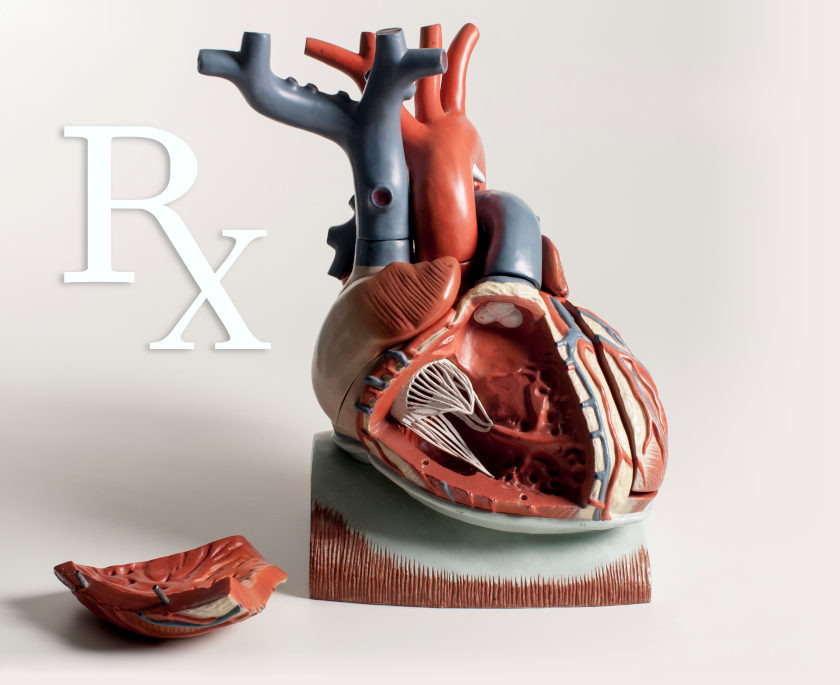The Pharmacologic Treatment of Heart Failure cont.
- Page 1: Causes of Heart Failure
- THIS PAGE: Pathophysiology of Heart Failure
- Page 3: Rationale for Drug Therapy
- Page 4: Classes of Drugs Used to Treat Heart Failure
Pathophysiology of Heart Failure
Cardiac and Vascular Changes
Accompanying Heart Failure
Cardiac
- Decreased stroke volume and cardiac output
- Increased end-diastolic pressure
Vascular
- Increased systemic vascular resistance
- Decreased arterial pressure
- Decreased venous compliance
- Increased venous pressure
- Increased blood volume
The following is a brief summary of changes in cardiac and systemic vascular function that occur during heart failure. More details can be found by CLICKING HERE.
Overall, heart failure causes a decrease in cardiac output. With mild heart failure, resting cardiac output may be normal because of compensatory mechanisms; however, the heart cannot achieve normal increases in cardiac output when required, for example, during physical activity. The ability of the heart to increase its output is impaired, although resting output may be normal. As heart failure progresses, resting cardiac can also decline.
A reduction in cardiac output during either exertion or rest results from a decline in stroke volume, assuming heart rate responses are still normal. Reduced stroke volume can be caused by systolic dysfunction, diastolic dysfunction, or a combination of the two. Briefly, systolic dysfunction results from a loss of intrinsic inotropy (contractility), most likely because of alterations in signal transduction mechanisms responsible for regulating inotropy and muscle contraction. Global systolic dysfunction can also result from the loss of viable, contracting muscle, as occurs following acute myocardial infarction. Diastolic dysfunction refers to the diastolic properties of the ventricle and occurs when the ventricle becomes less compliant (i.e., "stiffer"), which impairs ventricular filling. This occurs anatomically when there is ventricular hypertrophy, and it can be caused by impaired relaxation of the ventricle. To summarize, systolic dysfunction is related to impaired contractile properties, whereas diastolic dysfunction is related to the inability of the ventricle to fill because of decreased compliance.
Both systolic and diastolic dysfunction result in a higher ventricular end-diastolic pressure (increased filling pressure). This serves as a compensatory mechanism by augmenting the force of contraction and, therefore, stroke volume by the Frank-Starling mechanism. This mechanism helps to maintain stroke volume; however, if the systolic or diastolic dysfunction becomes too severe, then the capacity of this mechanism to maintain stroke becomes exhausted, and stroke volume can decline significantly. In some types of heart failure (e.g., dilated cardiomyopathy), the ventricle can dilate to very large volumes through remodeling as it attempts to maintain stroke volume and to limit the increase in end-diastolic pressure.
The reduction in cardiac output associated with heart failure precipitates changes in systemic and pulmonary vascular function and renal function. These changes occur as the result of venous pooling of blood, reduced organ perfusion, and activation of neurohumoral compensatory mechanisms. Reduced ventricular stroke volume leads to venous pooling of blood, which elevates venous blood volume and pressure. For example, in left ventricular failure, left atrial and pulmonary venous pressures and volumes increase. This pulmonary congestion can lead to pulmonary edema and shortness of breath (dyspnea). Right ventricular failure, whether alone or because of left ventricular failure, causes blood volume to increase in the systemic venous circulation, leading to elevated venous pressures and systemic edema. Reduced perfusion of the kidneys decreases sodium and water excretion, which causes blood volume to increase, which further increases venous pressures (and edema); however, the increased blood volume serves as an important compensatory mechanism to increase cardiac preload, which helps to maintain stroke volume through the Frank-Starling mechanism.
Neurohumoral activation is an important compensatory mechanism because it helps to maintain arterial pressure. Neurohumoral responses include activation of sympathetic adrenergic nerves and the renin-angiotensin-aldosterone system, and increased release of antidiuretic hormone (vasopressin) and atrial natriuretic peptide. The net effect of these neurohumoral responses is to produce arterial vasoconstriction (to help maintain arterial pressure), venous constriction (to increase venous pressure), cardiac stimulation, and increased blood volume. Although these neurohumoral responses serve as essential compensatory mechanisms, they can also aggravate heart failure by increasing ventricular afterload (which depresses stroke volume) and increasing preload to where pulmonary or systemic congestion and edema occur. Some of these mechanisms, such as sympathetic activation and increased angiotensin II, stimulate cardiac remodeling that may be beneficial in the short-term, but harmful in the long term.
Go to Next Page
Rationale for Drug Therapy
Revised 11/30/2023

 Cardiovascular Physiology Concepts, 3rd edition textbook, Published by Wolters Kluwer (2021)
Cardiovascular Physiology Concepts, 3rd edition textbook, Published by Wolters Kluwer (2021) Normal and Abnormal Blood Pressure, published by Richard E. Klabunde (2013)
Normal and Abnormal Blood Pressure, published by Richard E. Klabunde (2013)